
In this post, I’ll write about a 4 day bike trip through the Loire river valley in France from July 1-4. I did a bike ride from Prague to Dresden in May 2022 and loved that experience. Since I didn’t have any concrete plans over the July 4th week, I decided to do another bike ride in France, just a week prior. The best way to do these trips is to book them through a tour company that makes the hotel reservations for stops along the way, provides a bike and arranges for luggage transport from one city to the other. All you have to do is to cover the distance between your start and end city every day. You have the whole day to do it, so you can go at your own pace, stop for food, check out the vineyards, visit historical places etc.
Since time was short, I contacted a few agencies right away. Fortunately, French bike-tours was able to book me a tour along the Loire valley from Orleans to Saumur.
What to bring
The tour provides a long list of items to bring. The ones I found important are:
- Biking shorts with butt padding. Goes without saying why this is important
- Several light t-shirts and shorts
- Even in July, the temperature in the Loire valley is relatively cool and it can be chilly in the mornings and evenings. So bring a sweatshirt
- A phone mount. It should be easy to mount on the bike, preferably mountable with straps only, without any screws.
- Airpods
- Electrolyte tablets
I requested my bike to be fitted with toe cages which enables generating power through the whole of your pedal stroke, rather than just the downstroke. Also make sure you request the right bike frame size for your height. I normally use a medium size frame, but the bike provided to me was a large, which I found a bit clumsy. If you are planning on doing some night rides, you could consider bringing head lamps or a bike light.
That’s really it! You don’t need to bring much gear to bike 4 days and have an amazing time. Most bike tours will equip your bike with a box shaped bag on the handle and another bag along the side in the back to carry small things you need along the way. I found the bag on the handle useless and clumsy. On my second day, I removed it and handed it over to the person who picked up my luggage every day. The bag in the back is more than enough to store the few items (charging cables, sweatshirt, electrolyte tablets, pump, spare tube etc) you need along the way.
the tour company also provided a digital map (accessible using a special app), but I found the map difficult to use and followed Google maps biking directions most of the way. On Google maps, you can also set waypoints for sites you want to stop along the way. It wasn’t clear how to do this on the map provided by the company. One benefit of company provided map was that it didn’t always follow the direct bike path. In many places, it would stray from the direct path to your destination and take you around a local village or vineyard, adding variety to your experience along the bike ride.
While the highlights of the Prague-Dresden bike ride were the imposing, medieval hilltop fortresses such as Konigstein, lovely national parks and country houses with gorgeous gardens, the Loire valley is known for its lovely, renaissance era chateaus. I visited several of them– chateaus of Blois, Chambord, Chaumont, Amboise and Villandry and will have a lot more to say about them later in this blog.
Lets go through the highlights of each day before getting into the details.
- Day 1: Arrival in Orleans. Things to see: Joan or Arc monument, Orleans cathedral, Archaeological history museum
- Day 2: Orleans to Blois (~50 miles). Chambord and Blois chateau, church of St. Nicolas
- Day 3: Blois to Amboise (~30 miles). Chaumont and Amboise chateaus, Clos Luce manor in Amboise
- Day 4: Amboise to Villandry (~30 miles). Villandry chateau and surrounding gardens. Can stop by the city of Tours along the way
- Day 5: Villandry to Saumur (~50 miles): Several vineyards, Saumur chateau
The history..
The cities and chateaus of the Loire valley saw their heyday during the 16th and 17th century and it is very helpful to have a sense of what was going on in the region and France in general at the time. In medieval times, the Loire valley as much of the rest of France was composed of semi-independent kingdoms (eg., Blois, Anjou, Nantes in the Loire valley) that in some cases paid homage to the king of France in Paris, but still ruled their local kingdom with near complete autonomy. The ruling family lived in forts/castles built to house and protect them. These forts had a defensive function and the architectural features to support that function such as a moat and a “keep” (fortified tower to keep watch). In the 16th century, as the king of France consolidated power and brought these outer regions under more direct control and as the 100 year war between England and France drew to a close with England losing nearly all its possessions in France, the fortresses were slowly converted into chateaus which were built more as residences and less as defensive structures. The moats were filled and beautiful gardens created in the grounds around the chateaus.
All of this coincided with the renaissance, a historical turning point when different styles, designs and trends from Flanders and Italy mixed. Italy was admired for its artistic vitality. Thus, French monarchs invited many Italian artists and writers (eg., Leonardo Da Vinci) whose influence blended with local French tastes to create an “early French Renaissance” that is evident in the architecture of the chateaus.
After the 16th century, the fortunes of the chateaus diverged. The French royal court left the Loire valley for the Paris region. The French kings insisted that senior lords and their families lived by their side for many months. Some chateaus such as Amboise stayed within members of the extended royal family, while others such as Chaumont passed into private hands. The French revolution and the Napoleonic period was hard on the chateaus, considered a symbol of royal wealth. Wall panelings, paintings and even floor tiles were removed and sold, gardens stopped being maintained. The chateau of Amboise suffered a fire and large parts were demolished. After the defeat of Napoleon and restoration of the monarchy, some were returned back to their previous owners before the revolution, while others were acquired by members of the nobility and wealthy families who did extensive restorations. They were also listed as historical monuments by the French Ministry of Culture. Today, Chambord and Chaumont belong to the French state while Amboise and Villandry remain privately owned.
Let’s now do a fly over French history in the 15-17th century when the Loire valley was in its prime. Being a history buff, I’ve read a good bit of English history under the Plantegenets and the Tudors (12-16th century) and because England controlled large parts of France at that time, this included some French history as well. However I just assumed (quite stupidly) that there was an unbroken series of kings named Louis starting with Louis VI in the 12th century all the way to Louis XVI in the 18th century. Things aren’t quite as simple. Oversimplifying a bit, French kings from the 10th century to the French revolution can be divided into three dynasties. The house of Capet, Valois and Bourbons. The Capetians (descendents of Hugues Capet (987-996)) ruled from 987 to 1328. The last Capetian king Philip IV (285–1313) left three surviving sons (Louis, Philip and Charles), all of who became kings but all died without a male heir, leaving the french crown up for grabs. Among the three major claimants, Philip, Count of Valois, son of Charles of Valois, who was the closest heir in male line and a grandson of Philip III (1270–1285) ultimately succeeded and started the Valois line of kings. Interestingly, another claimant to the crown was Edward III of England, son of Isabella of France, the daughter and only surviving child of Philip IV. Because the French nobility weren’t too keen on the French crown passing over to the English, they supported Philip’s claim on the grounds that the crown couldn’t be inherited through the female line. This triggered a long period of conflict between England and France called the hundred years war, which ended with England losing most of its possessions in France.
The Valois line continued until 1589 when the last Valois king Henry III died without leaving a male heir. At this point, the crown passed to king of Navarre (a kingdom in Northern Spain) also confusingly called Henry III. Henry was the son of Antoine de Bourbon, the head of the house of Bourbon, a “cadet” (meaning descended from the younger sons of the monarch) branch of the earlier Capetian line. Henry III assumed the French crown as Henry IV starting another dynasty called the Bourbons. From Henry IV descended all the Bourbon sovereigns.
The Bourbon kings (Henry IV, Louis XIII, XIV, XV and XVI) ruled uninterruptedly until the French revolution in 1789 . There was a restoration of monarchy after the defeat of Napoleon in 1812, but we won’t get into that. See this for a complete timeline of French monarchs.
With that background, let’s come back to the Loire chateaus. The Loire chateaus were at their peak during the later Valois kings Francis I (1515 – 1547) and Henry II (1547 – 1559) and his wife Catherine Medici, part of the Medicis (a major Italian banking family and political dynasty) and niece of pope Clement VII. The main reason for this is that the Valois kings spent a significant amount of their time in the Loire valley, where some of them (eg., Francis I) spent their childhoods. In the 17th century, the crown moved to Paris, a major factor in the decline of the chateaus fortunes.
The 16th century is also when the Renaissance was in full bloom. Francis I was a prodigious patron of the arts, and attracted many Italian artists to work for him, including Leonardo da Vinci, who brought the Mona Lisa, which Francis had acquired. The Italian architects and artists strongly influenced the development of the Loire chateaus by bring Renaissance architectural styles.
Another defining movement of the 16th century was the Protestant Reformation that kicked off in Saxony, Germany in October 1517 with the publication of the Ninety-five Theses, authored by Martin Luther . The Reformation quickly spread across Europe and splintered into multiple movements–Lutheranism, Calvinism etc. Incidentally, the story of Luther’s life and how he became disillusioned with the Catholic Church is fascinating and I recommend reading about it.
The French protestants adhered to the Calvinist tradition of Protestantism and were called Huguenots. They constituted 10-15% of the population by the late 16th century. As in many other European countries, the rise of Protestantism led to a mini-civil war between the Catholics and Protestants. These civil wars are known as French Wars of Religion which raged from the 1560s until the end of the 16th century. In fact, one of the triggering events of the French Wars of Religion called the “affair of the placard” occurred at the Chateau of Amboise. I’ll describe this event later in this post.
Between two and four million people died from violence, famine or disease directly caused by the Wars of Religion. One of its most notorious episodes was the St. Bartholomew’s Day massacre in 1572, when thousands of Huguenots celebrating the marriage of Henry of Navarre (future king Henry IV) to Marguerite de Valois in Paris on Saint Bartholomew’s Day, August 24, 1572 were massacred. The massacre was instigated by the French crown that was growing concerned about the increasing power and influence of the Huguenots.
The fighting ended with a compromise in 1598, when Henry IV (who we met earlier) originally a protestant, but who had converted to Catholicism in 1593 to become king, issued the Edict of Nantes, which granted substantial rights and freedoms to the Huguenots. However, Catholics who constituted the majority of French population, continued to disapprove of Protestants and of Henry, and his assassination in 1610 triggered a fresh round of Huguenot rebellions in the 1620s. However they retained the religious provisions of the Edict of Nantes until the rule of Louis XIV, who gradually increased persecution of Protestantism until he issued the Edict of Fontainebleau (1685). This ended legal recognition of Protestantism in France and the Huguenots were forced to either convert to Catholicism or flee as refugees.
The exodus of Huguenots from France created a brain drain, as many of them were skilled professionals and had occupied important places in society. Many Huguenots immigrated to America, and contributed significantly to the country’s development. According to the Huguenot Society of America, George Washington, himself, was the grandson of a Huguenot on his mother’s side.
The remaining Huguenots faced continued persecution under Louis XV. By the time of his death in 1774, Protestantism had been all but eliminated from France. Persecution of Protestants officially ended with the Edict of Versailles, signed by Louis XVI in 1787. Two years later, with the Revolutionary Declaration of the Rights of Man and of the Citizen of 1789, Protestants gained equal rights as citizens.
With that history lesson out of the way, lets go back to my trip.
Arriving in France
I had a 8 AM Delta flight from JFK to Paris, but the security check line was so long that I ended up missing my flight. Fortunately, Delta put me on another flight operated by Air France departing 4 PM the same day. This flight was departing from a different terminal, so I had to exit the terminal and then take the air train to that terminal (terminal 1) and go through security again.. These days, the security check delays can exceed 30-40 min, so you have to arrive at the airport at least 1.5 hrs before departure. I paid for access to the Delta/Air France lounge and just hung out at the lounge. For $50, the lounge access (with great food, drinks etc) was well worth it. With my original flight, I would have arrived in Paris around 9:30 PM local time, and had booked a hotel near the airport to stay the night. The later flight arrived in Paris early morning so I paid for a one night stay in vain. I watched Mission: Impossible – Dead Reckoning Part 1 and Napoleon on the plane, both great movies. It was amusing to see Vanessa Kirby back to back in very different roles.. playing the gangster Alana in Mission: Impossible and Josephine in Napoleon..
From Paris CDG, I took the RER B followed by a local subway line to Paris Austerlitz station and then a SNCF train to Orleans. The bike tour company had already booked a hotel for me in Orleans. On the way from the train station to my hotel, I passed by a statue of Joan of Arc. Orleans was at the center of events that turned Joan, a 17 year old peasant girl into a national hero when she rallied a demoralized French army during the siege of Orléans by the English in 1429. Few days after her arrival, the English lifted their siege. Joan then urged the French to pursue the English, culminating in another victory for the French. She was later caught by the English and burnt at the stake, but her legend lives on. 
I stayed at the hotel Empriente in Orleans and highly recommend it. They let me check in early, provided useful advice on what to do in the city and the breakfast buffet was great. After catching some sleep, I picked up my bike (already dropped off at the hotel by the bike tour company) and biked around the town. I visited the Orleans cathedral and biked along the Loire river.



An interesting artifact at the cathedral is the picture of the Shroud of Turin, a linen cloth that bears a faint image of the front and back of a man. It has been venerated for centuries, especially by members of the Catholic Church, as the actual burial shroud used to wrap the body of Jesus after his crucifixion, and upon which Jesus’s bodily image is miraculously imprinted. According to wikipedia, radiocarbon dating has established with 95% confidence that the linen in the shroud comes from the 13th century, hundreds of years after the death of Jesus, but controversy around the shroud continues to swirl.
Day 1: Orleans to Blois (49 miles)

Next morning, I dropped my luggage with the hotel concierge (the bike tour company would pick up the luggage and drop it off at the next hotel) and set off on the first day of the ride. I stopped by a local bike shop to buy a phone handle mount and at a mall to buy a Europe to US power adapter, which I had forgotten to bring.

The bike was a bit big for me, but otherwise quite comfortable. The bike came with toe cages on the pedals, which I had requested to be installed. Toe cages make it easier to pedal long distances by making it possible to generate power on both up and down pedal strokes. That way you are using both the quads and hamstrings.
I found the temperature in the Loire valley unexpectedly chilly for July. It is in the low to mid 60’s in the morning, climbing into the mid 70’s in the afternoon. I was glad I brought my sweatshirt!
A few km into the ride, I spotted a Nuclear power plant. Uniquely among developed countries, France derives 70% of its electricity from Nuclear power!

As per usual, I binged on some history podcasts along the way. I learnt about the Normans (short for “North Men”), Viking raiders who settled in the North of France (named Normandy after them) and played a major role in world history. William a Norman prince invaded England in 1066 and defeated Harold Godwinson, the last Anglo Saxon king, ushering in a new era in English history. The Normans quickly replaced the Anglo Saxon ruling class, with the native English forming the lower classes. This relationship can be seen in the large number of words absorbed in the English language from Norman French. For example, the animal names (“cow”, “sheep”, “pig”) come from Old Anglo Saxon, while the names of the meats derived from these animals comes from Norman French (“beef”, “mutton”, “pork”).
A bit less well known is the Norman influence in southern Italy and Sicily. The Normans ruled that region for several centuries and played a major role in the first crusade and Byzantine empire politics in the 10th and 11th century. The story of Bohemond I is fascinating!
About halfway to Blois, I stopped by a nice riverside cafe to get a chocolate crepe and coffee. The chocolate crepe was amazing!

As mentioned earlier, the Loire valley is dotted with charming medieval chateaus. I made a detour to the Chateau of Chambord, the largest and most recognizable chateaus in the Loire valley, built by Francis I as a hunting lodge. A timeline of the chateau’s history is shown below.

Chambord is famous for its double helix staircase, rumored to be inspired by Leonardo Da Vinci.





After spending about an hour in the chateau, I continued along to Blois, about 20 km from the chateau. I was following Google maps directions, which at one point led me down a pretty rocky, unpaved path, more suitable for a mountain bike than my hybrid bike.
I arrived in Blois around 4:30PM and my luggage had already been delivered. The tour company had booked one night at the Mercure hotel in Blois. The concierge informed me that the Blois chateau was open until 6:30 PM. I was a bit tired after biking ~49 miles, but I decided to visit the chateau before dinner. I locked my bike in the garage, took a quick shower and walked over to the chateau. I passed by a bar full of people watching the France-Belgium soccer game.

The Blois chateau follows a similar pattern as the other Loire valley chateaus. It started life as a medieval fortress in the 13th century and reached its prime during the Valois kings, particularly Francis 1. His wife Claude refurbished Blois with the intention of moving from the Chateau d’Amboise to Blois. Francis initiated the construction of a new wing and created one of the period’s most important libraries in the castle. The last Valois king Henry III and the first Bourbon king Henry IV spent time in Blois chateau as well.
The Blois chateau is also the site of some of the important events of the French wars of religion. The Duke of Guise, the leader of the Catholic league in France was murdered on 23 December 1588, by Henry III. Catherine Medici, Henry III’s mother and the most consequential queen of France in the Valois dynasty breathed her last here.
By the time of the French Revolution, the chateau had been neglected for more than 130 years. After the revolution, the contents, many of its statues, royal emblems and coats of arms of the palace were removed. In a state of near-total disrepair, the Chateau of Blois was scheduled to be demolished but was instead converted into a military barracks.
In 1840, the chateau was placed on the list of historical monuments which allowed state funds to be used in the preservation. Today it is maintained and owned by the town of Blois and has been opened to the public as a museum and tourist attraction.




After the chateau tour, I strolled around to take in the sights. I was also tired and hungry and it was dinner time. There were several restaurants around the town square, but they didn’t look particularly appealing. I ended up eating at a gourmet restaurant strangely called “Bro’s restaurant”. The food was tasty, but the potion sizes were very small and I found it way over priced. I left partly hungry after spending over 70 Euros. I went back to my hotel and ordered another salad and orange juice.
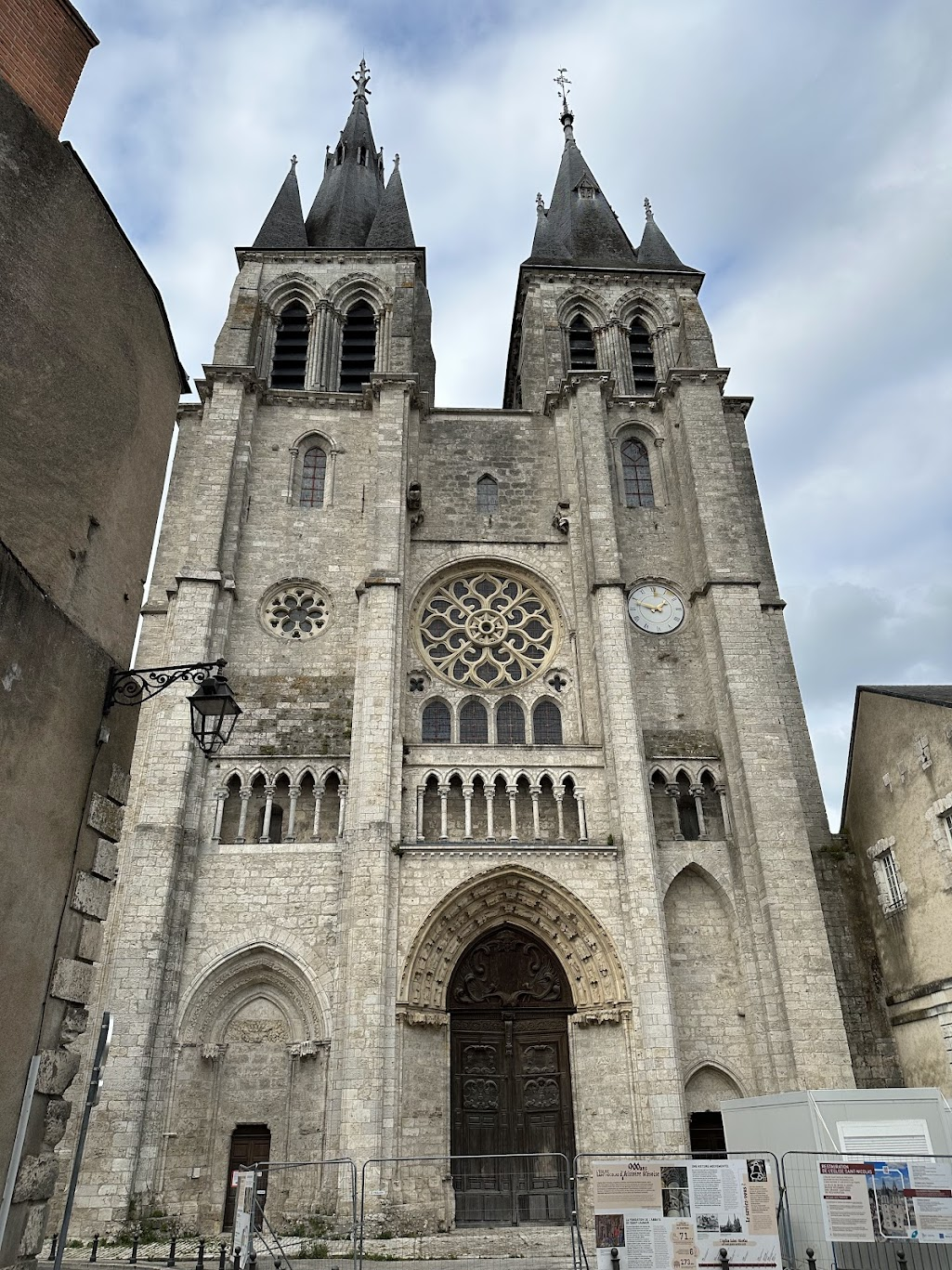
Day 2: Blois to Amboise (30 miles)

Next morning, I had a big breakfast, dropped my luggage off at the hotel concierge and set off towards Amboise. I biked through country roads with lovely farms along the way.
Along the way, I stopped at Chaumont chateau, which is located on a hill right along the Loire river, unlike Chambord that requires taking a several km detour from the bike path. One has to go up a fairly steep path to arrive at the chateau and I was quite proud of making it up the hill without getting off my bike although I was on the lowest gear possible, most of the way 🙂

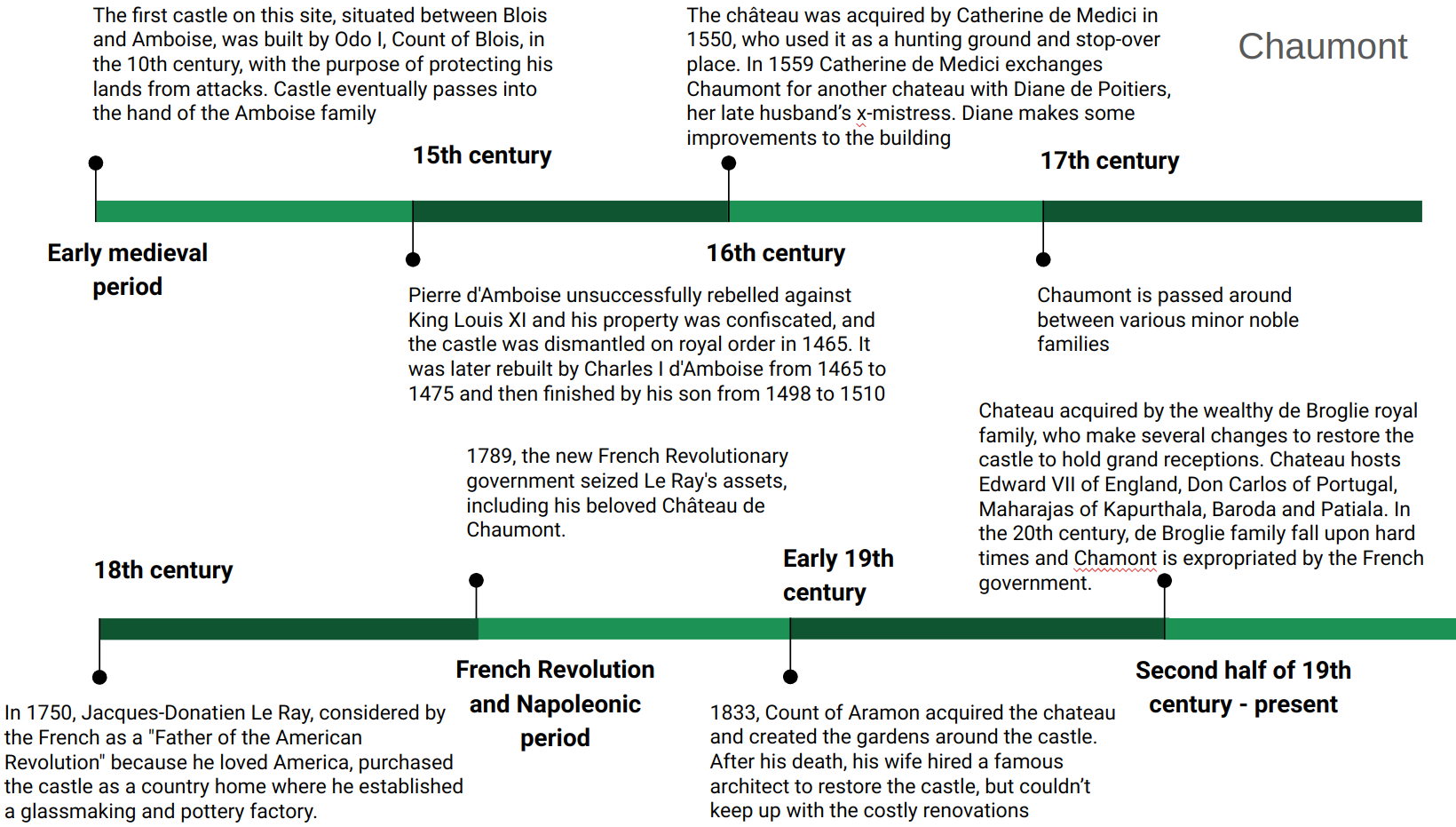
A timeline of the chateau’s history is shown above. It follows the same pattern as the other chateaus in the Loire valley. The story of Jacques-Donatien Le Rey and family, who owned the chateau in the 18th century is particularly interesting because it intersects with the founding and early years of the United States.
In 1750, Jacques-Donatien Le Ray, a minor noble, purchased the castle as a country home where he established a glassmaking and pottery factory. When the rumblings of revolution started in America, Le Ray acted as an intermediary between the US representatives to France and the court of Louis XVI. He even provided a staffed mansion for Ben Franklin in Paris. Ultimately, Le Ray contributed more than 2 million livres (French currency at the time) towards the cause of American independence. However when America gained independence, the new constitution didn’t provide for taxes to reimburse foreigners who had contributed towards the revolutionary war.
Le Ray’s son went to America in 1785 to attempt to recover this debt and also to look for land for property speculation opportunities. Despite enthusiastic support from Ben Franklin, his efforts weren’t successful and he had to return back to France. However in 1790, thanks to one last show of support from Franklin, he finally received a partial payment of his father’s debt (1 of the 2 million) from the new congress. Le Ray’s son also became an American citizen, and the towns of Le Ray and Chaumont in New York are named after him.
This reprieve saved the Le Ray’s family from bankruptcy, because after the French revolution in 1789, Le Ray’s assets, including Chaumont were seized, causing him much financial distress. After the restoration of monarchy in 1815, Chaumont was returned back to the Le Ray family.. a happy ending to this turbulent story.

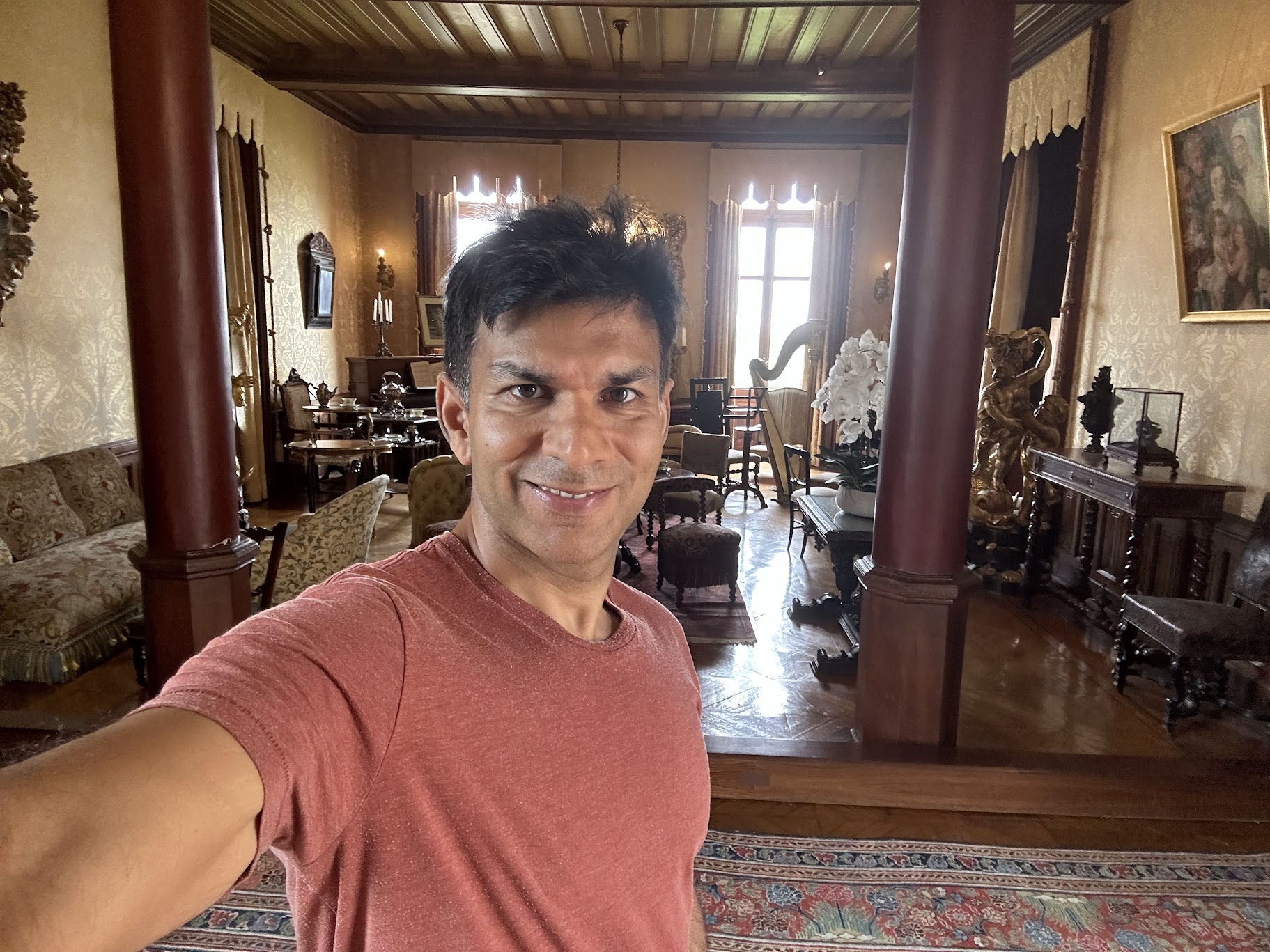

In addition to its renaissance era charm, Chaumont is famous for its extensive gardens. The gardens consist of small plots with plants and props arranged in a theme. The plots are connected via a narrow winding path.



This one is my favorite. The theme of this one goes like this. Imagine that nature and ecosystems had evolved differently.. and if humans were not the dominant species? And if our friendly pollinators (bees and other insects) had evolved to create their own cities that resemble human cities? And if our places and spaces were the other way round, so that we were observing our pollinator friends from outside their pollinator city? With a nod to New York skyline and layout of central park, this more sustainable world could look like below.. an urban environment of bee towers, bird houses, butterfly shelters surrounded by magnificent, nourishing plants, in a mutually beneficial, symbiotic romance. It is a very active town, this town of birds, bees, butterflies and bats. We can learn a lot from their organization and resilience! How cute!
After the Chaumont chateau visit, I continued along to Amboise, my destination for the day. A few km away from Amboise, I passed by several caves that had been converted into restaurants, wine cellars, art galleries and such.

I arrived in Amboise around 3. I stayed at hotel Le Clos, the best hotel I stayed at during this trip. The hotel is a converted manor house from the 17th century, with a large garden and pool nestled among 100 year old trees. The staff was super friendly and food excellent.

I checked in and promptly made my way towards the two main attractions in Amboise–the chateau of Amboise and Clos Luce, the mansion Leonardo Da Vinci lived in the last 3 years of his life. Both are a 10 min walk from my hotel. Along the way, I stopped by a sandwich place to get a quick bite to eat.
The story of the Chateau of Amboise is quite similar to that of the other Loire valley Chateaus. It reached its peak in the medieval times and several French kings of the Valois dynasty lived (and died–eg., Charles VIII who died at the château in 1498 after hitting his head on a door lintel) in the chateau. The chateau fell into decline from the second half of the 16th century. After the French revolution, the majority of the interior buildings were demolished. So what stands today is only a portion of what existed in the 15th and 16th century (the visitor center has a nice time lapse video of the chateau over the centuries, which makes it easy to visualize how much of the exterior was demolished). The surviving buildings, along with the outer defensive circuit of towers and walls were restored after the restoration of monarchy in the early 19th century. It has been recognized as a historical building by the French Ministry of Culture since 1840. Today, the successors of Louis Phillippe repair and maintain the chateau through a foundation.
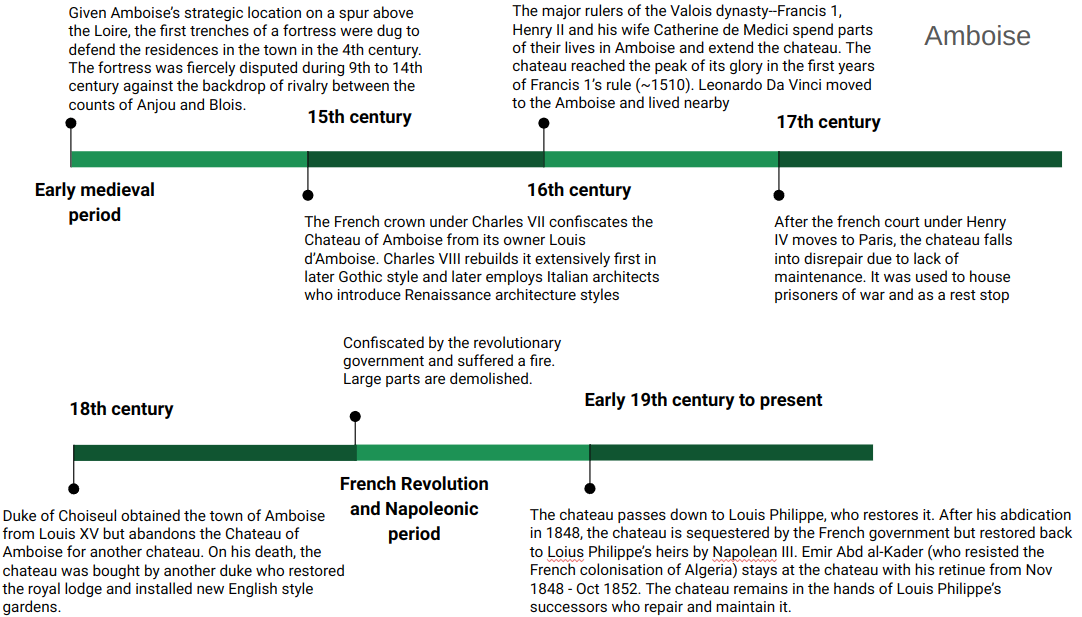


The Chateau today is a shadow of its former self. At its heyday in the 16th century, the spot I’m standing in the picture above would have been inside one of the wings. Large parts of the Chateau were demolished during the Napoleonic period.
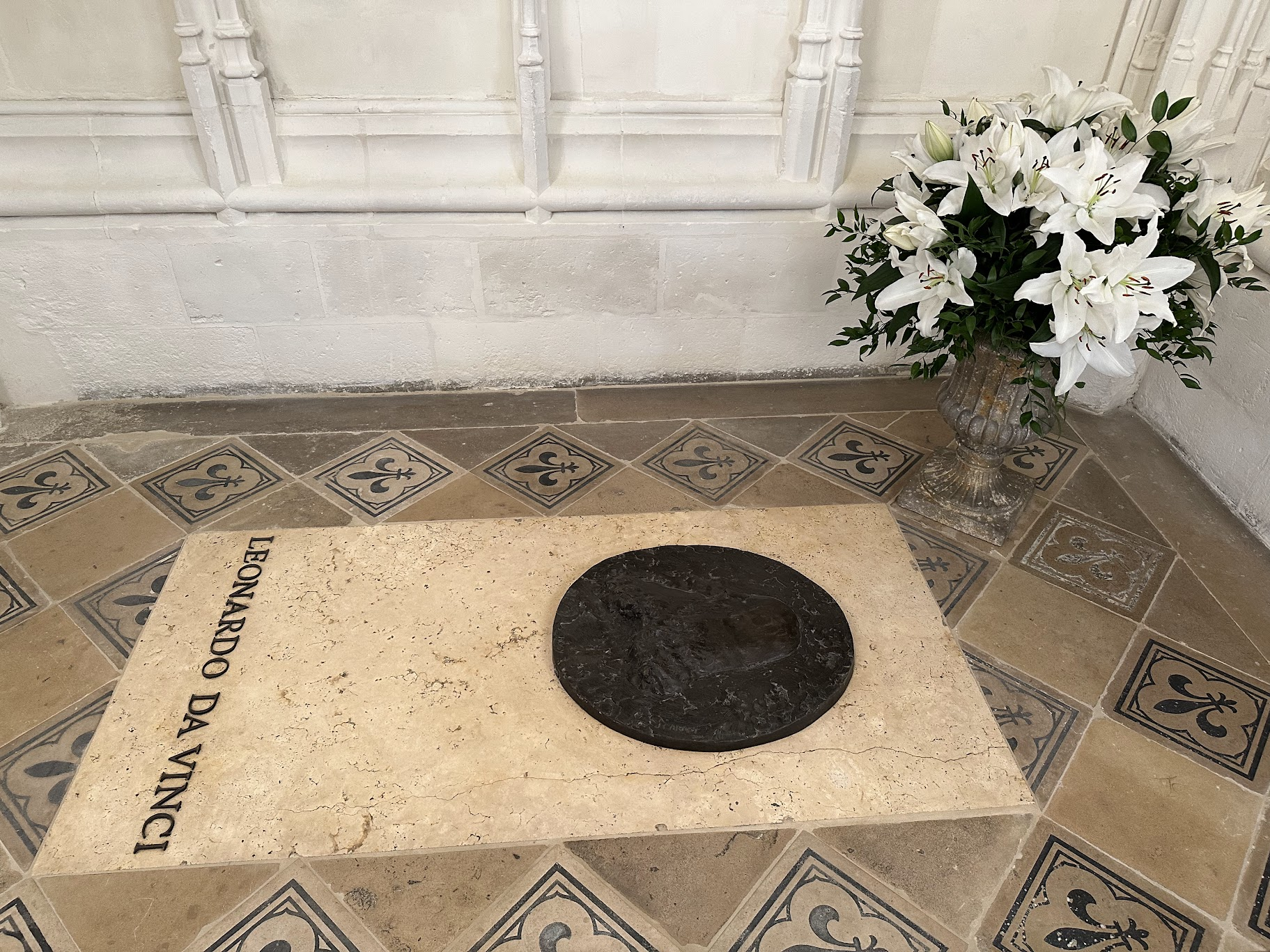
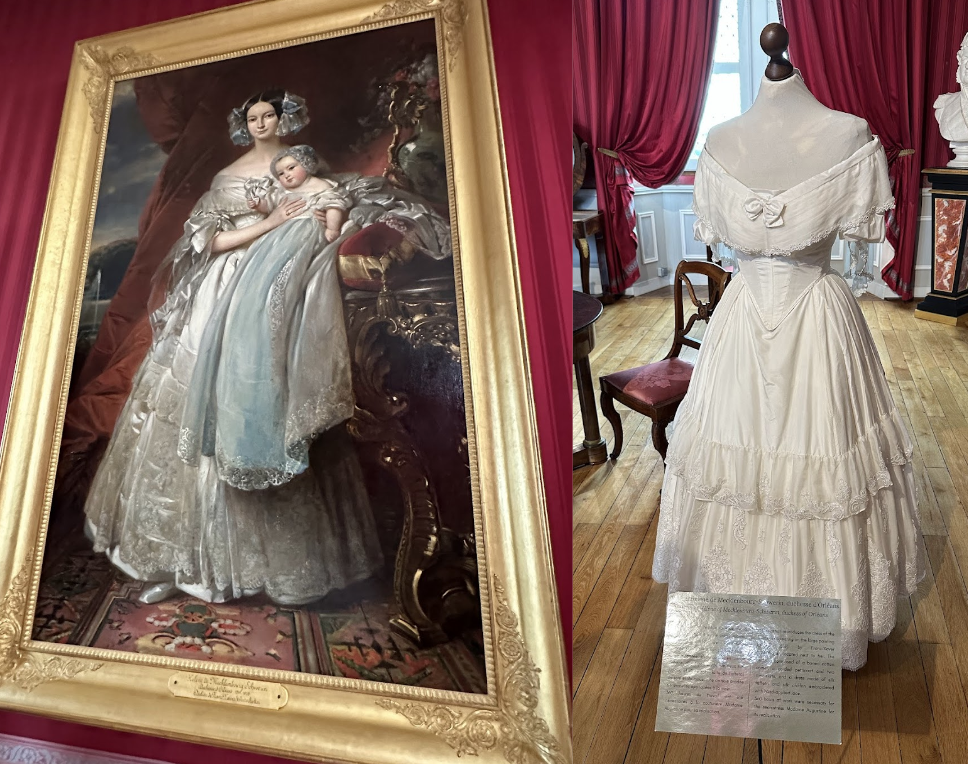

One of the triggers of the French wars of religion called “The Affair of the Placards” took place at the chateau of Amboise. In the first decades of the 16th century, zealous fervor unleashed by the Reformation to reform the Catholic church and get rid of its abusive practices (eg., indulgences) were spreading through Europe. The French monarch Francis I (who lived in the chateau of Amboise at that time) adopted a moderate policy, favoring church reform, but keeping a distance from the more controversial theories of the protestants. However, on the night of 17th October 1534, placards decrying the “terrible, great and unacceptable abuses of the papal Mass” were posted in the Kingdom’s main towns and on the door of the king’s chamber itself in Amboise. This breach of security shocked Francis I and put a stop to the process of moderate reform. Hundreds of people were arrested and many were burnt alive. In the following decades, the tug of war between Catholics and Protestants resulted in several pogroms and expulsions, reaching its climax during the bloody night of St. Bartholemew on Aug 24, 1572. All in the name of god!
I finished the castle tour around 5. The other attraction I wanted to cover was Clos Luce manor, the home of Leonardo Da Vinci from 1516-1519. The manor is a 10 min walk up a gentle hill from Amboise castle. Along the way I passed by a sign pointing at some archaeological artifacts from Gallic times (when France was part of the Roman empire). I followed the sign to where the artifacts should have been, but found nothing significant other than an old looking wall..

Leonardo Da Vinci was born in 1452 in Tuscany. He spent most of his life in Venice, Florence and Rome. In 1515, the French under Francis I won a big battle against the Swiss and won back control of Milan, in the hands of the Swiss until then. After the French victory, on 11 December 1515, Francis met with Pope Leo X in Bologna, to settle the Pragmatic Sanction of Bourges, the selection of French bishops and other disputed issues that were part of the continuous power struggle between the Catholic church of France and the pope in Rome. Also at the meeting in Bologna was Leonardo Da Vinci, whom Francis persuaded to accompany him back to France, and granted him the Clos Lucé manor along with a yearly stipend. His patron Giuliano de Medici, brother of pope Leo X having died recently, Leonardo found the offer too good to refuse and arrived at Clos Luce with three of his paintings, including the Mona Lisa, the Virgin and Child, Saint Join the Baptist and all his manuscripts. This is how these paintings landed with the French and are today on display in the Louvre!
Leonardo influenced the architecture of several medieval forts being converted into chateaus in the Loire valley around this time. The prime example is the cross-shaped central-plan design and the “double helix” staircase at the Chambord chateau. He also researched urban planning and hydraulic works, developing a plan to reach Italy more easily by building a system of canals and locks to connect the Loire valley to the region of Lyon.



Legend has it that a secret underground passage once linked the Clos Luce and the Chateau of Amboise enabling Leonardo and Francis I to visit each other regularly.




After the Clos Luce manor tour, I was finally done with sightseeing for the day. It had been a very active day–I biked about 30 miles and saw the Chateaus of Chaumont, Amboise and Clos Luce. So far, I had only had breakfast, a protein bar and a quick snack on the way to the chateau of Amboise. So I treated myself to a delicious pizza with Anchovies at a lovely Italian restaurant near the Amboise chateau. As I was sitting outside waiting for the pizza, it started raining heavily. The waiter moved me inside and I enjoyed watching the rain while eating my pizza. So far the weather had been perfect–cloudy skies, no rain and temperatures in the low 70s. I checked the weather for tomorrow, the third biking day of the trip and was relieved to see that it looked all clear with no rain.
I walked back to the hotel after dinner and wanted to lay in the pool for a bit. However the water was quite chilly, so I just sat in the lawn and read. This was my favorite day of the bike trip!
Day 3: Amboise to Villandry (32 miles)
I enjoyed a big breakfast at the hotel and set off for Villandry, the third city on the trip.

I made a detour to see the Chanteloup Pagoda, a 44 meter tall structure consisting of 7 floors, each built as a dome. The Pagoda was designed by architect Le Camus and commissioned by the Duc of Choiseul, Prime Minister of Louis XV in 1765. The design was inspired by the Chinese pagoda at Kew Gardens in London, built around the same time.


While there is not much else to see around the site today, in the 18th century, there was a big chateau and several waterways and canals in the area. Nearly all of this was demolished after the French Revolution, unfortunately.

The pagoda features 7 domes, intersected on the side by a narrow, sloping staircase that rises to the top. The stairway is guarded by a wrought-iron banister which looked quite worn out in many places.. Each dome has a narrow balcony around it that offers breathtaking views of the Amboise forest and the Loire Valley. Each balcony mercifully has a parapet around it, but even so I felt a strong vertigo from the top and clung to the wall as I walked around the balcony to record the video below..
You may wonder how Chinese architectural elements made their way to France and Britain. The 17th and 18th century saw growing commercial exchange between China and Europe (primarily France and Britain). Chinese porcelain, tea and silk were highly prized in Europe. Both the British and French set up private companies with a monopoly on Asian trade–The British and French East India Companies. The monopoly of the French East India company however was suspended in 1769, leading to a period of open private trade. During 1770 and 1785, a large number of merchant voyages from France to Canton (the port in China where trade with Europe was permitted) occurred. This coincides with the time when the pagoda was built, which explains why Chinese architectural style became influential in Europe around that time.
Sadly, European attitudes towards China over time shifted from respect to contempt, culminating in a series of Opium wars in the mid 19th century that resulted in military defeat and humiliation for China. I recommend this great book by Steve Platt, if you are interested in this topic.
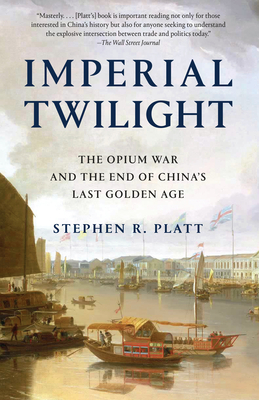
After the pagoda tour, I continued on my way to Villandry. On the way, I passed through some lovely farmland. Rows of crops with a flowering plant (usually a Rose bush) in front of some of the rows, the flowers adding a dash of color to a sea of green hues

About halfway through, I stopped by in Tours to grab a sandwich. Tours is the largest and oldest city in the Loire valley. It was founded by Roman emperor Augustus and possessed the largest amphitheaters of the Roman empire (completely built over by houses today, unfortunately). Tours was the site of the famous battle of Tours where Frankish forces led by Charles Martel finally defeated the armies of the Muslim Umayyad dynasty that had taken over Iberia (modern day Spain and Portugal), stopping the expansion of Islam in North and West Europe. Tours was the capital of France during the Valois kings in the 16th century.






Because I didn’t stop at any Chateaus along the way, I arrived in Villandry around 2PM, earlier than I had arrived at previous towns on the trip. Villandry is a very small town, and most of the hotels and restaurants are towards the front of the town, by the main road. There are only two attractions–the chateau of Villandry and savonnieres-villandry caves. I checked-in to my hotel and got a glass of wine and lunch. Then, I walked over to the Chateau of Villandry, a few min walk

Villandry is a typical Loire valley chateau..and by this time, you know what that means. A notable event that took place here in 1189 was the signing of the peace of Colombiers, when the Plantagenet king of England Henry II recognized his defeat by Philippe Auguste, king of France. As an aside, the story of Henry’s life is fascinating. His wife was Eleanor of Aquitaine, one of the most formidable woman of the middle ages, and his sons included John (of Magna Carta fame), and Richard the Lionheart, who fought against Saladin in the second crusade. If you want to read about a crazy family drama with some incredible twists and turns, look him up!

As shown in the timeline above, today, the Chateau is owned by the great-grandson of Joachim Carvallo and Ann Coleman. Many of the rooms in the chateau feature family photographs of the Carvallo family.
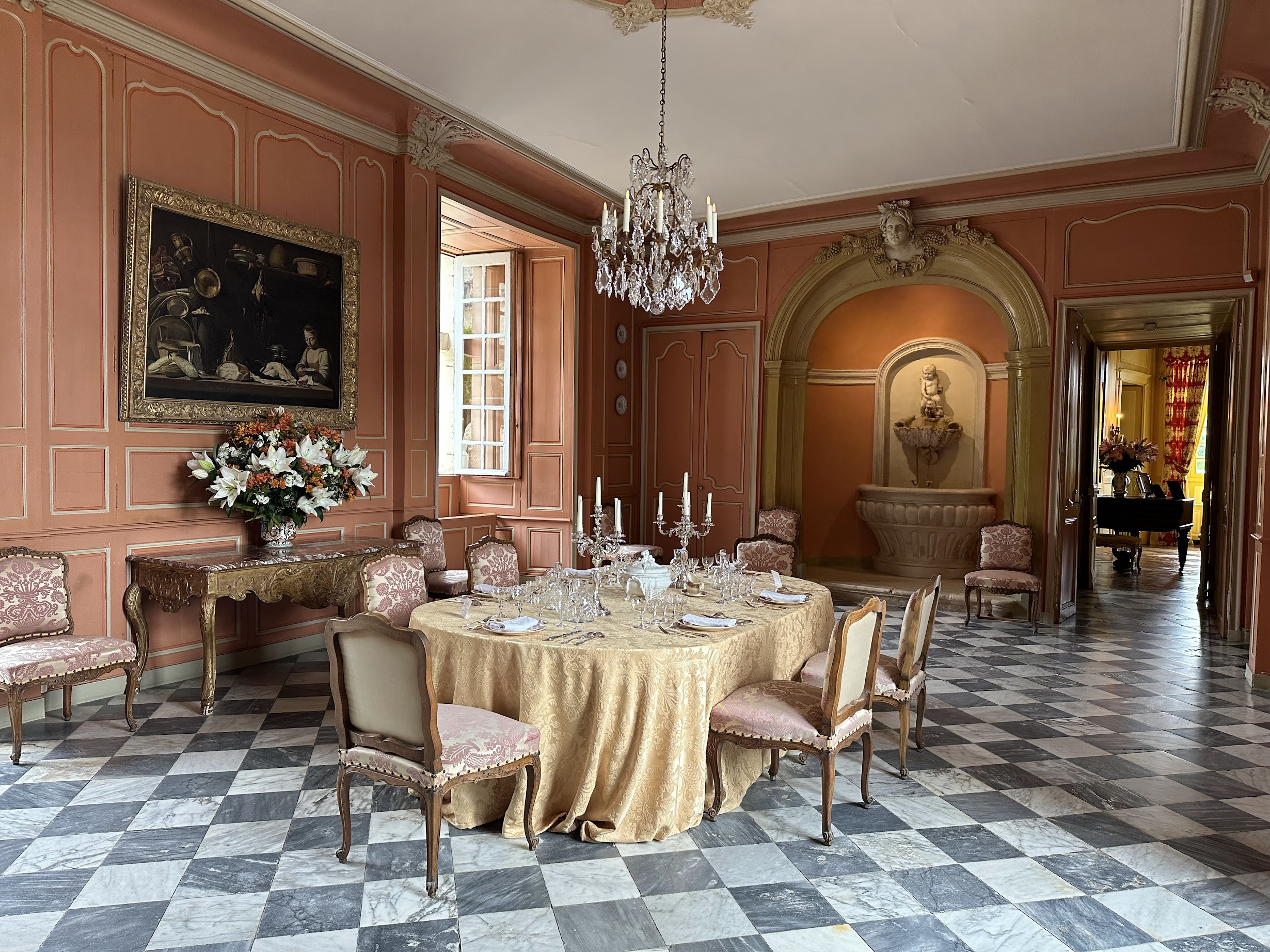


Villandry is most known for its amazing gardens, covering 7 hectares that blend harmoniously with the surrounding landscape and the architecture of the chateau. A small valley with a stream running through it cuts through the plateau on which Villandry is located, creating ideal conditions for growing and building terraced gardens.





Another notable feature is a kitchen garden made up of nine raised beds identical in size but with different geometric motifs (see picture above). These beds are planted with vegetables in colors that alternate to create the impression of a multi-colored chequerboard. Among these vegetables is the tomato, that originated in the Americas and was introduced to Europe in the early 16th century by Spanish explorers. Initially, tomato plants were cultivated throughout Europe, but primarily as an ornamental plants. They spread to Italy by the mid-1500s where it began to be incorporated into regional cuisine. I found this piece of history fascinating!
After the Villandry chateau tour, I walked over to the savonnieres-villandry caves, about a mile away. Entrance to the caves is only allowed in a guided tour, which run every hour. Fortunately, a tour was leaving just as I arrived. The tour was in French, but the information booklet was available in English and I learnt some interesting information about the geology of the region.
About 100 million years ago, a shallow sea covered the region. Rivers flowing into the sea deposited masses of limestone on the bottom. After the sea dried out, these formed the dominant rock in the Loire Valley. Limestone is a good building material–hard enough for buildings, but soft enough to carve. No wonder that Loire valley is dotted with castles built from limestone!
Limestone is also easily eroded by CO2 dissolved in water. Over the millennia, rainwater seeping into the rocks relentlessly eroded the limestone, creating this cave and so many others I saw along the way. As the water laden with limestone flows around the cave, it creates the familiar structures–stalactites, stalagmites, draperies etc found in many caves.
What makes the savonnieres-villandry caves unique is that the dissolved limestone concentration is significantly higher than usual. This high concentration enables a process called “petrification”. If you leave an object under a stream of water in the cave, the dissolved calcium carbonate (CACO3) will slowly cover the object with a thin layer of CACO3, which will thicken over time. This layer of calcium carbonate gives the object a glowing, white sheen. It takes about a year time before obtaining a sufficient layer. During that time, the object must be rotated to ensure a uniform and harmonized layer is deposited and details are preserved. Initially the deposited layer is almost translucent, but once taken out of the water and exposed to the air, it acquires an ivory-like hue over time.

The gift shop had several objects that had undergone this process for sale. The quality (and therefore, price) varied significantly. The good quality ones were beautiful with the carving details preserved perfectly!
We also saw some Roman era building materials..

After the cave tour, I walked back to Villandry, got a big dinner and read for a while. The next day was the final biking day of the trip and I needed to cover almost 50 miles.
Day 4: Villandry to Saumur: 50 miles

This was my last biking day. I was scheduled to take the train back to Paris around 4 PM today so I had to make it to Saumur around 3 PM. I got an early start and biked at a brisk pace.


After biking about 15 miles, I stopped in the town of Avoine to grab a sandwich and charge my phone.


I was bored with history podcasts by now, so I listened to a podcast about the economics of Broadway shows (a very interesting subject), and why it so hard for a third political party to emerge in the US (a depressing subject).
I had mostly been following the Loire river, but I also biked along some small rivers such as Indre that flow into the Loire.

About 8 miles from Saumur, the Vienne river merges into the Loire. From here, I followed the main road along the Loire, with a couple of detours to check out the many vineyards on the left bank of the Loire. I had to bike up a short but steep climb to approach the vineyards but the views were worth it.




I made it to the hotel in Saumur around 2:20, tired, but with a big smile on my face. My luggage had already arrived. I was taking a train for Paris the same afternoon and the hotel called me a taxi, that dropped me at the train station, a 5 min drive. Along the way, I snapped a picture of the Saumur chateau.

That’s it! I hope you enjoyed reading this blog. Please drop a comment if you did!

Speechless coverage of the trip. Extremely useful tips for groups planning to venture out this excursion. I compliment the writer & wish him all the best
Hey! I just had to let you know that your adventure sounded incredible! Your photos and detailed descriptions totally transported me to all the amazing places you visited. Biking is such an awesome way to explore! The country roads, little towns, and historic places you described were absolutely breathtaking! I’m already looking forward to hearing all about your next adventure!
Thanks very much for the kind comment, Olga!
Wow! This is an incredible account of what looks like a really cool bike tour! Really enjoyed the mix of helpful details on logistics, photography, and history….I’ve been meaning to do a Loire Valkey bike tour and this has definitely motivated me to start planning, this looks amazing!!